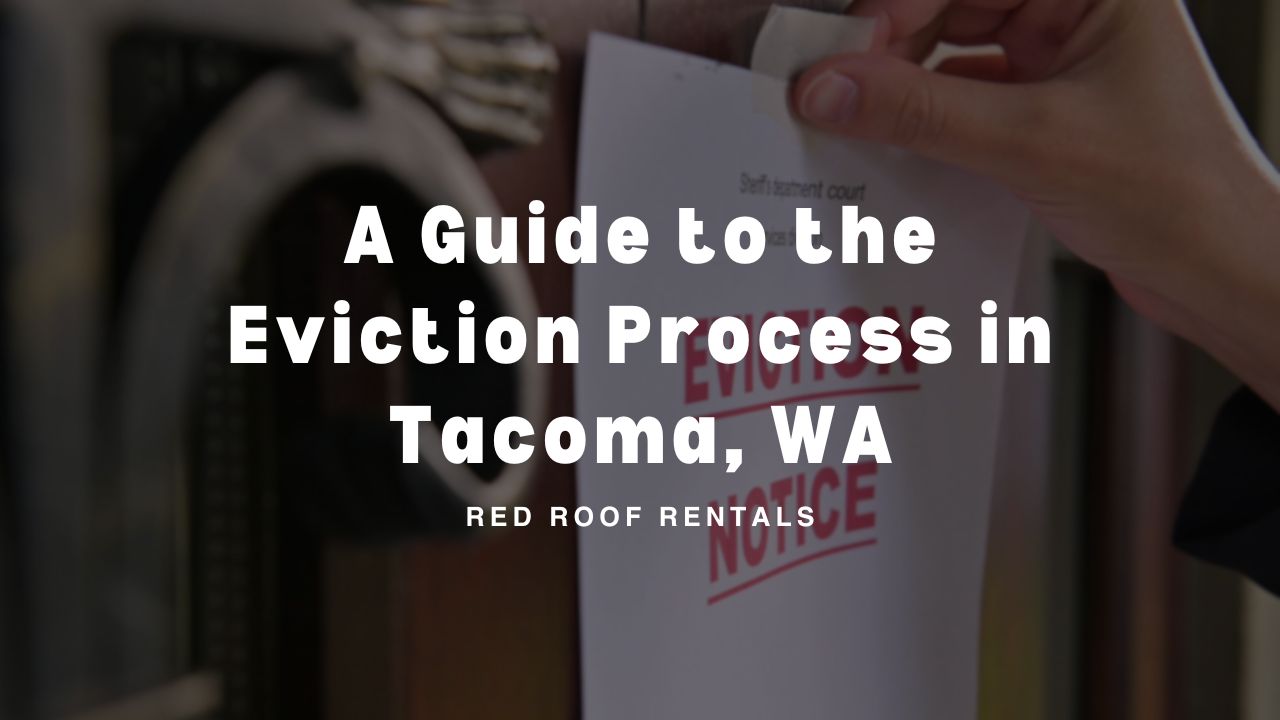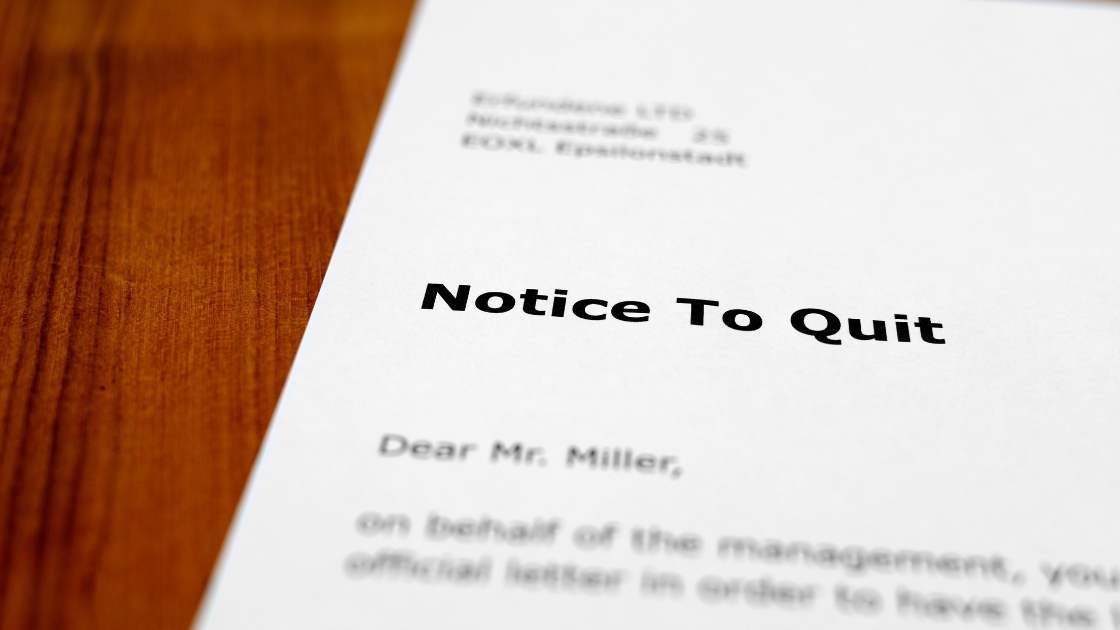Navigating eviction procedures in Washington requires landlords to understand and adhere to state-specific laws and regulations.
Evictions are legal procedures designed to balance the rights of both landlords and tenants, and any misstep can delay proceedings, lead to financial losses, or even result in legal repercussions.
An eviction is not just removing a tenant from a rental property—it’s a legal process that involves several critical steps, each governed by Washington.
As a landlord, you may need to evict tenants for reasons ranging from unpaid rent and lease violations to more severe breaches like criminal activity or unit damage.
However, the process must be handled with care, as failing to follow proper procedures can invalidate the eviction and result in penalties for you as the landlord.
Tenant Relations and Communication
In reality, most landlord-tenant relationships proceed smoothly thanks to careful screening and clear expectations. Evictions are rare—especially when landlords take the time to vet tenants thoroughly and maintain open lines of communication. In fact, when strong screening procedures are in place, the need for eviction becomes exceedingly uncommon. Still, it's essential to be prepared and informed, as a mismanaged eviction can have a significant impact on your bottom line.
What’s the Eviction Process in Washington? Here’s a Guide
Notice for Lease Termination with Legal Cause
Under the Washington residential landlord-tenant act, landlords must have a valid legal reason (referred to as cause) to terminate a lease or rental agreement early. Common reasons include:
Nonpayment of Rent
Violation of Lease Terms (e.g., unauthorized pets, illegal subletting)
Damage to the Premises or Nuisance Behavior
Illegal Activities Conducted on the Premises
The type of eviction notice a landlord must serve depends on the specific cause, such as:
1. 14-Day Notice to Pay Rent or Vacate
Used when a tenant fails to pay rent. The tenant has 14 days to either pay the overdue rent money in full or vacate the unit.
2. 10-Day Notice to Comply or Vacate
Issued when a tenant violates the terms of the lease or rental agreement, such as having unauthorized occupants or causing damage.
The tenant must remedy the violation or leave within 10 days.
3. 3-Day Notice to Quit
Reserved for severe violations like illegal activities, creating a nuisance, or significant damage.
The tenant must vacate the premises within three days and does not have the option to fix the violation.
Each notice must include specific information, including the reason for termination, the timeframe for compliance, and the consequences of non-compliance.
Serving a Tenant with an Eviction Notice in Washington
Properly serving tenants is crucial in Washington. If the document isn’t served correctly, it may invalidate the eviction proceedings. Landlords have several options for delivering the form:
1. Personal Service: Handing the proper notice directly to the tenant.
2. Substitute Service: Notifying another adult occupant at the unit and mailing a copy to the tenant.
3. Posting and Mailing: If no one is available, landlords can post the written notice conspicuously on the rental house and mail a copy to the tenant.
4. Electronic Service: Notices can be sent electronically only if the tenant has explicitly agreed in writing to receive notices this way.
You should document the delivery method used, including obtaining a signed acknowledgment, taking photos of posted notices, or using certified mail with a return receipt.
Tenant Eviction Defenses in Washington State
Even if landlords follow every step correctly, residential tenants have the legal right to contest an eviction. Common defenses tenants may use include:
Improper Notice: The landlord did not serve the written notice correctly or failed to include essential details.
Retaliatory Eviction: The tenant claims the eviction is in response to them exercising their legal rights, such as filing a complaint about unsafe living conditions.
Housing Discrimination: The eviction is allegedly based on race, gender, disability, family status, or other protected characteristics under fair housing laws.
Uninhabitable Living Conditions: The tenant argues that they withheld monthly rent because the landlord failed to maintain a habitable property.
Payment of Rent: In cases of nonpayment, if the tenant has made rent payments within the notice period, eviction may no longer be valid.
Landlords must be prepared to counter these defenses with documented evidence, such as lease agreements, records of communication, maintenance logs, and proof of written notice delivery.
Filing an Unlawful Detainer Lawsuit
If the renter does not comply with the notice, landlords can then file an unlawful detainer lawsuit in the Superior Court of the county where the rental is located.
The steps to follow when moving forward with an eviction lawsuit include:
1. Filing a summons and complaint with the court.
2. Paying the required court fees.
3. Serving the summons and complaint against the tenant (following proper service rules).
4. Awaiting the tenant’s response.
The tenant typically has a set period to respond (usually between 7–14 days). If the tenant contests the eviction, a court hearing will be scheduled.
Attending the Court Hearing
At the court hearing, both the landlord and the tenant will have the opportunity to present their cases. The landlord must provide documentation supporting their claims, including:
Lease agreements
Copies of the notice and proof of service
Records of unpaid rent or rental agreement violations
Communication logs
If the tenant fails to respond or attend the hearing, the court may issue a default judgment in favor of the landlord. If the tenant contests, the judge will make a ruling based on the evidence presented.
Writ of Restitution
If the landlord wins the court case, the judge will issue a Writ of Restitution. The Writ of Restitution is a legal document that authorizes the local sheriff to physically remove the tenant from the property.
The sheriff will notify the tenant of the scheduled eviction date. The tenant must then vacate the unit, and the landlord can regain possession.
Keep in mind that it is illegal for landlords to attempt a “self-help” eviction, such as changing the locks or removing a tenant’s belongings without sheriff supervision.
The Eviction Process Final Step: Regaining Possession
Once the sheriff executes the Writ of Restitution, the landlord can take back control of the property. Steps to follow include:
1. Changing the locks.
2. Documenting the property's condition with photos and inspection reports.
3. Handling the security deposit according to Washington state law, including deductions for damage (if applicable).
4. Preparing the unit for re-renting.
While evictions are an infrequent part of property management when you have solid screening and proactive communication, it’s crucial for landlords to understand the process and their responsibilities. This not only ensures compliance with Washington law but also helps protect your investment and maintain positive relationships with tenants whenever possible.
What Is an Eviction Cost Guarantee?
An eviction cost guarantee is a type of landlord protection that helps safeguard property owners from the financial burden of eviction proceedings. In practical terms, this means your property management company may cover certain legal fees and court costs associated with evicting a tenant—up to a specified limit—if the tenant was properly screened and approved through their services.
This coverage typically applies within the first year of a tenant's lease and often includes:
- Payment of filing fees and court costs associated with the eviction process
- Coverage for attorney fees related to the eviction
- Support with necessary legal paperwork and communications
It's important to note that most eviction cost guarantees come with eligibility requirements, such as minimum rent amounts or exclusions for specific localities. Always review the program details to confirm what's included and any exceptions that may apply.
Having this kind of protection can provide peace of mind for landlords, especially when navigating the complexities of Washington's eviction laws.
Conclusion
The eviction procedures in Washington require careful adherence to state laws and regulations at every stage.
From issuing the correct notice to handling court hearings and coordinating with law enforcement, landlords must remain compliant to avoid delays or legal repercussions.
If you need help with managing your Washington rental unit, get in touch with us at Red Roof Rentals. We have been managing properties in the Tacoma area for over 40 years! Contact us today to learn more.
Navigating Regulations with Confidence
Owning rental property means dealing with a maze of city requirements, changing legislation, and routine inspections. Staying compliant can be overwhelming, but that’s where an experienced property management team makes all the difference. We handle everything from property registration and city inspections to keeping up with the latest laws—so you can focus on the success of your investment, not the stress of paperwork.
Disclaimer: This blog is intended for general guidance and should not be used as a substitute for legal advice from a licensed attorney in your state. Laws change, and this post might not be updated at the time of your reading.






